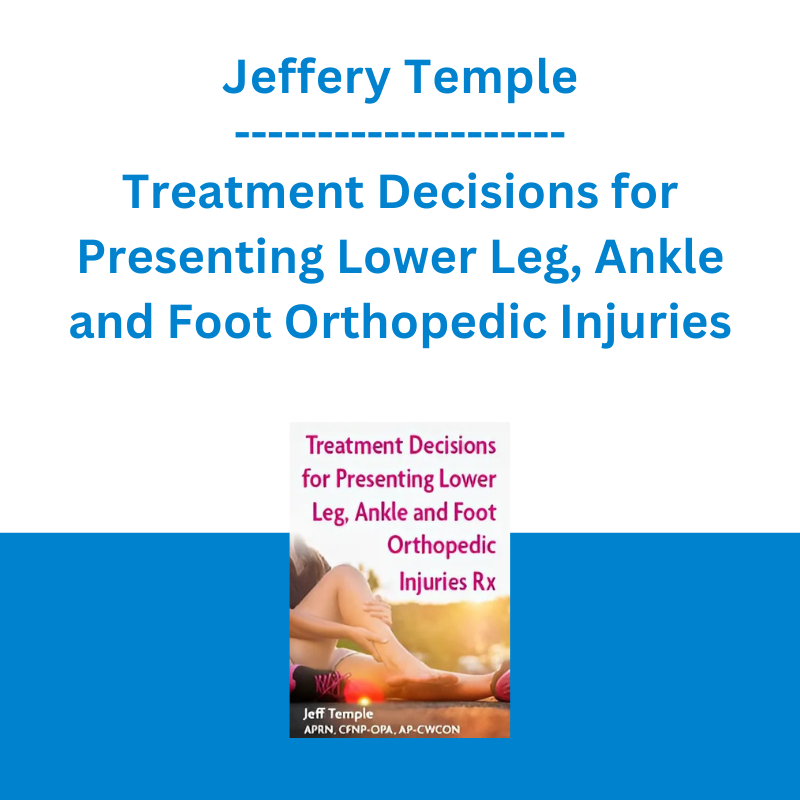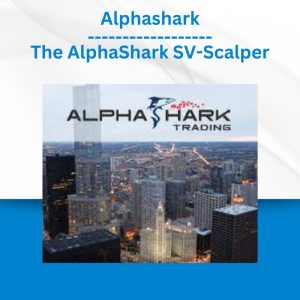*** Proof of Product ***
Exploring the Essential Features of “Jeffery Temple – Treatment Decisions for Presenting Lower Leg, Ankle and Foot Orthopedic Injuries”
Speaker:Jeffery Temple, APRN, CFNP-OPA, AP-CWCON
Duration:3 Hours 03 Minutes
Format:Audio and Video
Copyright:Aug 08, 2024
Description
Developing an advanced level of knowledge for acute and chronic disorders of the lower leg, ankle and foot is no small task. There are so many things that can, and do, go wrong. As patients present with the myriad of lower extremity musculoskeletal injuries, providers are expected to perform an assessment that leads to confidence in a diagnosis and treatment plan.
You have an opportunity to learn from Jeffery J Temple, APRN, CFNP OPA, AP-CWCON. Jeff has focused his entire career treating orthopedic patients, in both ambulatory care and acute care settings. He is excited to share his expertise on assessment techniques, practice pitfalls, interpretation of images, and specific skills to guide treatment decisions for lower leg, ankle and foot orthopedic injuries.
You can expect to learn through real-life patient examples, take away new ways to identify a fracture, indications for further diagnostic testing, when a referral is necessary, prescribing considerations for this patient population and highlights for patient teaching.
Speaker
Jeffery Temple, APRN, CFNP-OPA, AP-CWCON
Jeff Temple, APRN, CFNP-OPA, AP-CWCON, has worked in the orthopedics field for more than 35 years, collecting experiences working in both ambulatory care and acute care orthopedic roles. He has advanced training and experience in sports medicine, bone fractures, arthritis and general orthopedics. Currently, Jeff sees patients and works in a practice with three orthopedic surgeons.
He began his career as a surgical technologist and continued his education, to earn his physician assistant degree and a master’s degree as an advanced practice nurse practitioner. Jeff is certified through the National Board for Certification of Orthopaedic Physician Assistants, is well published and has given presentations to healthcare audiences on a variety of orthopedic topics that draw from his expertise.
Speaker Disclosures:
Financial: Jeffery Temple has an employment with Bigfolk Valley Hospital. He receives a speaking honorarium from PESI, Inc. He has no relevant financial relationships with ineligible organizations.
Non-financial: Jeffery Temple has no relevant non-financial relationships.
Objectives
- Determine the best strategies for identification, assessment, and treatment of an acute or chronic disorder of the lower leg, based on the mechanism of injury and/or alteration in gait pattern/mechanics.
- Evaluate the importance of radiological testing, interpretation, and indications for additional testing based upon presenting chief complaint and/or diagnosis.
- Analyze principles for appropriate splint application, potential complications, and indication for orthopedic surgical referral.
- Plan for the ways that associated comorbidities can affect an individual’s outcome for healing.
- Explain the latest pharmacological management of orthopedic injuries.
Outline
Complicated Comorbidities
- Diabetes
- Peripheral vascular disease
- Venous hypertension/stasis
- Lymphedema
Leg Acute Disorders
- Gastrocs
- Posterior tibial tendon
- Peroneal (longus + brevis)
Ankle & Foot Acute Disorders
- Ligament
- Tendon (Achilles)
- LisFranc
Bone (Fractures)
- Tibial plateau
- Tibia/fibula
- Compartment syndrome
Ankle Joint Acute Injury
- Malleolar, Bimalleolar, Trimalleolar
- Massionue
- Syndesmosis
- Calcaneus
Foot Acute Injury
- Talus
- Tarsals
- Metatarsals
Posterior Tibial Tendon Dysfunction: Chronic Disorder
- Increased valgus angle ankle (lateral impingement)
- Chronic ankle instability
Bone Disorders
- Osteoarthritis
- Hallux valgus
- Hallux rigidus
Advanced Orthopedic Assessment Strategies
- Date and mechanism of injury
- Inspection: Open wounds, swelling, NV status
- Palpation + percussion
- Tenderness + tension + pulses
- Bone tender to percussion
- Additional joint involvement
- Proximal + distal
- Appearance – skin changes + edema + ulcer presence (location)
Radiology Tips for Clinicians
- Standard x-rays: Above + below injury
- CT scan
- Used for complex fractures – detailed image of bone (3-D recon)
- MRI – generally used for soft tissue
- Acute – Achilles tendon, posterior tibial tendon, Lisfranc, infection
- Vascular – ABI/TBI
- Neurological – EMG
Immobilization Techniques
- Splinting
- Sugar tong
- Posterior
- Coaptation
Durable Medical Equipment (DME) alternatives
- Tall CAM boots/walker
- Hinged knee braces (T-Scopes)
- Crutches
- Post-op shoe
Pharmacological Considerations for Orthopedic Patients
- Anti-inflammatories (NSAIDS)
- Traditional
- COX-2
- Antiplatelets recommendations
- Anticonvulsants
- Antispasmodics
- Narcotics
- Over the counter: Oral vs. topical
Obtaining the Right Diagnosis, Followed by Necessary Documentation
- Accurate side
- DOI
- Specification/stability
- Neurovascular status
- Follow-up +/transfer = accepting provider
- Follow-up call
Please see the full list of alternative group-buy courses available here: https://lunacourse.com/shop/










 Toshko Raychev - Profit System + ITF Assistant
Toshko Raychev - Profit System + ITF Assistant  Racing Workshop - Complete Online Package
Racing Workshop - Complete Online Package